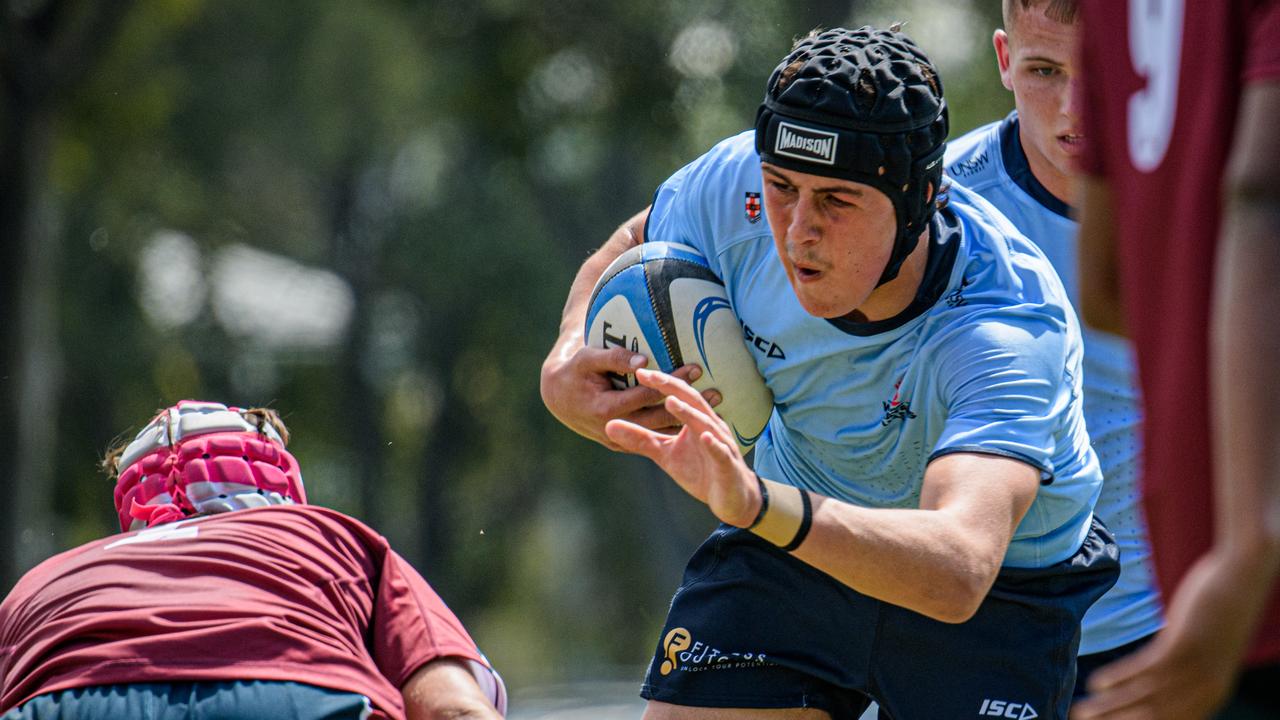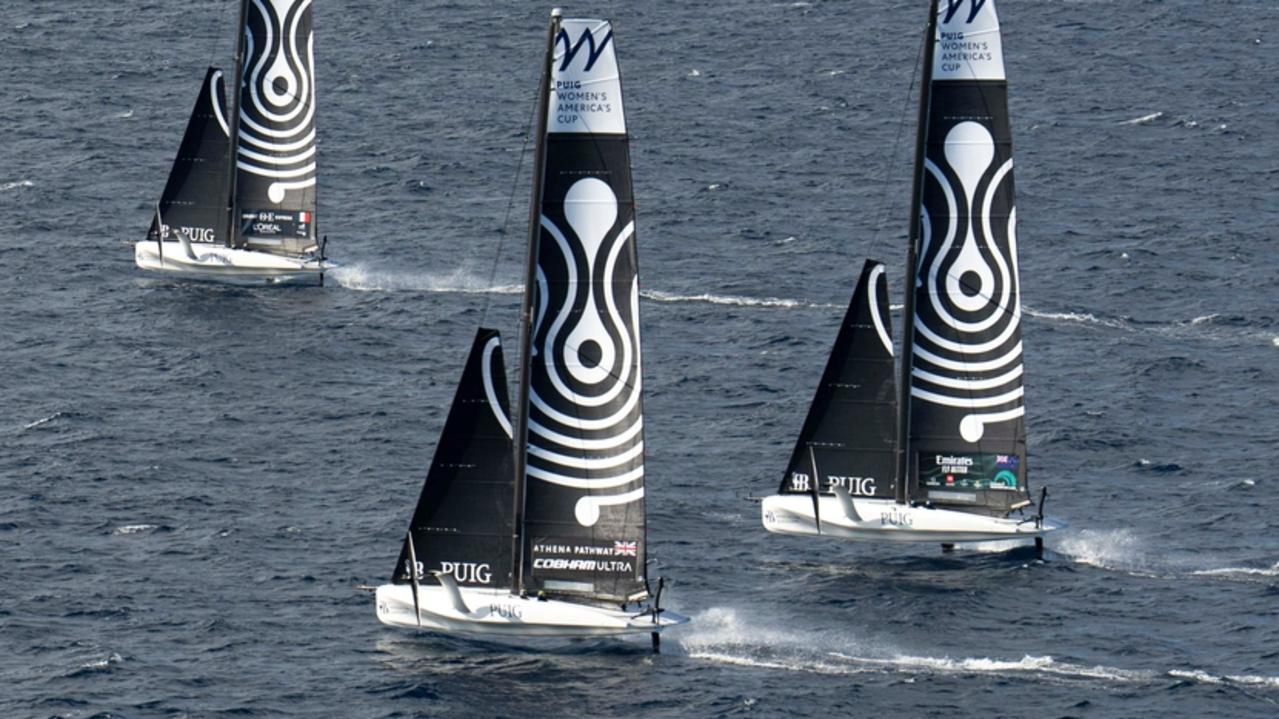FIFA Women’s World Cup: Sam Kerr and other times Australian sport stars have pushed through pain barrier
Now that Sam Kerr has confirmed her World Cup comeback, will she enter Australian sporting folklore with a miraculous performance or will the risk end in tears? We remember when other stars pushed through the pain barrier.
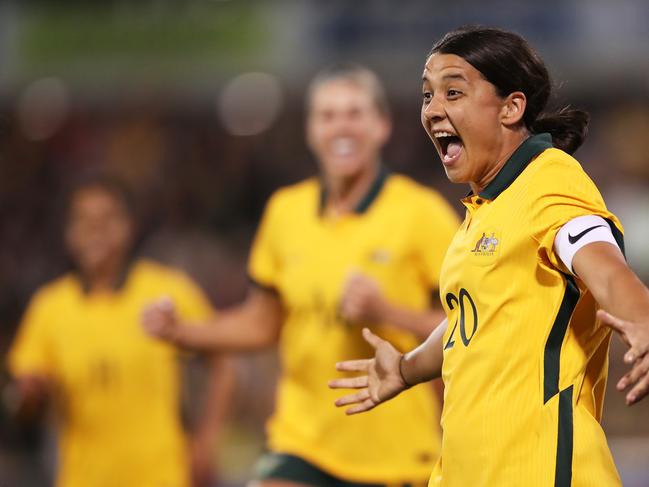
Sport
Don't miss out on the headlines from Sport. Followed categories will be added to My News.
We started out sensing she could provide a Cathy Freeman moment but suddenly there are vibrant echoes of Steve Waugh.
Sam Kerr’s challenges with her instantly famous calf muscle has taken the cricket world back 22 years to the day Waugh felt his leg had been “hit by a cannon ball’’ taking off for his first run at Trent Bridge in the 2001 Ashes.
Much to Waugh’s indignity, he was stretchered off. Amazingly, despite the fact his ripped calf was not fully healed, he played 20 days later.
Even more incredibly, he hobbled and wobbled his way to an imperious 157 not out in his return innings at The Oval.
How he got there became a defining sports story of how sheer bloody-mindedness can take sport’s toughest minds to places most of us will never visit.
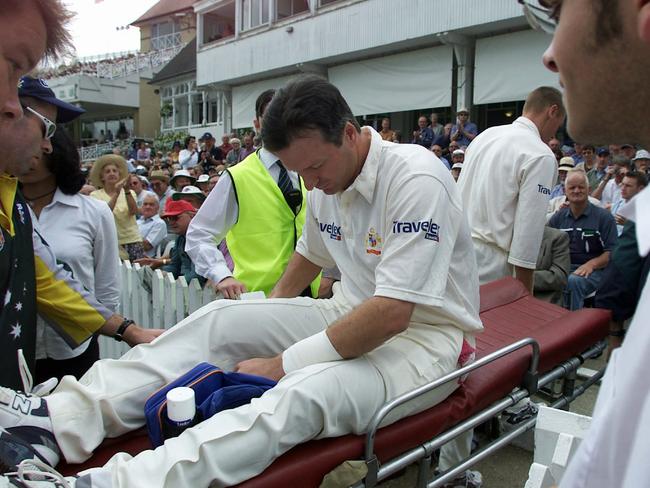
The differences between Waugh‘s plight and Kerr’s are obvious. Batsmen generally don’t have to sprint and stretch their bodies as much as soccer players.
But a calf is still a calf. Pain is still pain. And shrewd minds like Waugh and Kerr know how to play smart.
With a five centimetre by five centimetre tear in his calf — that triggered a two centimetre tear higher up in the muscle — Waugh was initially so restricted he could barely wiggle his big toe.
But with the Ashes retained while he was in hospital, Waugh, according to his work Out Of My Comfort Zone, received a call from wife Lynnette saying “you are the captain, they need you and you should be there at The Oval to accept the trophy.‘’
Waugh missed the next Test in Headingley – which Australia lost – but worked to the point of obsession to get back for the last Test at The Oval.
He would spent four or five hours a day getting the injury treated by physio Errol Alcott and when his motivation flagged or the pain of treatment soared to insufferable levels he drew inspiration from a young boy from Geelong, Mathew Dean, who was not expected to survive the first day of his life due to open heart surgery and had 60 more operations in his first 10 years.
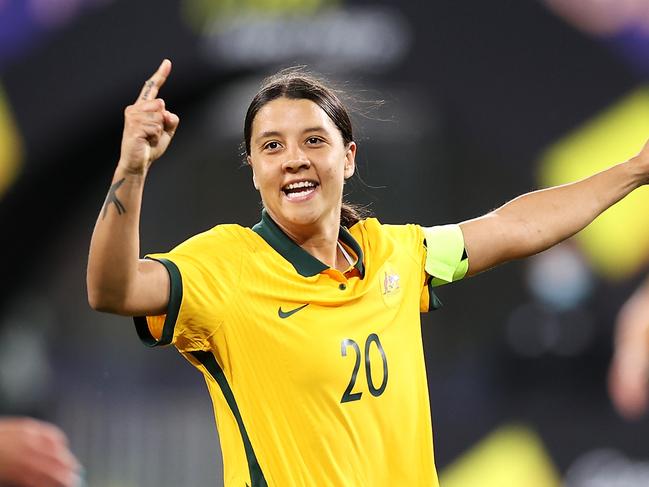
Before he took the field at The Oval, Waugh – as surely Kerr will against Canada – felt waves of incredible anxiety wash over him … “what if I snap it early taking a quick single?‘’
When he reached 30 he tweaked another part of the calf and later strained his buttock.
He finished the innings a complete physical wreck but the big knock made the pain worthwhile.
Just as Waugh protected himself by not running between wickets like a greyhound chasing a lure so too might there be ways to minimise the damage to Kerr against Canada.
Can she simply be plonked around the goalsquare? Can she be used as a decoy?
Waugh celebrated the Ashes win with gusto as the team created their own ashes by burning bails for an impromptu dressing room ceremony and Waugh has written about some team members having a “comical’’ nude run around the ground at midnight.
But eventually the celebrations faded and the pain set in and Waugh spent much of the next six weeks in agony as the leg “developed a heartbeat of its‘ own’’ with deep vein thrombosis.
Waugh learnt that the rewards of pushing through pain can be enormous – but so can the consequences.
It’s why the bravery of Kerr’s call cannot be underestimated.
PLAYING THROUGH PAIN: AUSSIE SPORTING HEROES REMEMBERED
Captain Sam Kerr’s courageous comeback to rescue the Matildas’ World Cup campaign is likely to end in tears – happy or sad, we don’t know yet.
If she returns from a calf strain to lead the Matildas into the knockout stages of the home World Cup, she would join a list of Australian greats who have produced some of the most iconic comebacks in sporting folklore.
If her return is premature after just 12 days of recovery and ends in aggravation of the calf muscle – a notoriously temperamental soft tissue injury where there is no substitute for time – she may join the list of sports stars who risked it all but their bodies simply fell short.
Australian sport has countless moments of athletes who in the heat of battle have sustained a serious or major injury and bravely fought on to victory.
Think Nathan Lyon limping out to bat with a torn calf muscle in the second Ashes Test,
Sam Burgess winning a Clive Churchill Medal in South Sydney’s 2014 NRL grand final win after suffering a fractured eye socket on the first play of the game or Dermott Brereton booting three goals in Hawthorn’s 1989 VFL premiership after he got poleaxed off the centre bounce breaking two ribs.
But those moments are instantaneous. Bravery in battle, decisions made to push on in pain in the moment.
It’s an altogether different story making that decision at the selection table days in advance, when coach and player must weigh up all the scenarios and decide whether to risk playing an underdone star who could quickly sustain further injury to leave your team exposed or make the safe call and select a fully fit teammate.
Kerr says she is ready. It’s now up to coach Tony Gustavsson to decide if he starts Kerr, or plays his star player off the bench.
On Monday night after the Matildas play Canada in a must-win game, we will know if Kerr joins the greatest gambles that paid off in Australian sport:
COMEBACKS THAT SUCCEEDED
Trevor Gillmeister (1995 State of Origin series): The Queensland forward was in hospital for several days before the third game of the series, fighting blood poisoning from an infected cut on his leg. ”Fatty (coach Paul Vautin) asked the doctor, what is the worst scenario? He said, poison could go through his system and he could die,” Gillmeister told Fox Sports. “Chris Close went, shit that’s no good. Then he said, well I couldn’t think of a better place to die than Lang Park.” Gillmeister played and the Maroons completed a 3-0 series sweep.
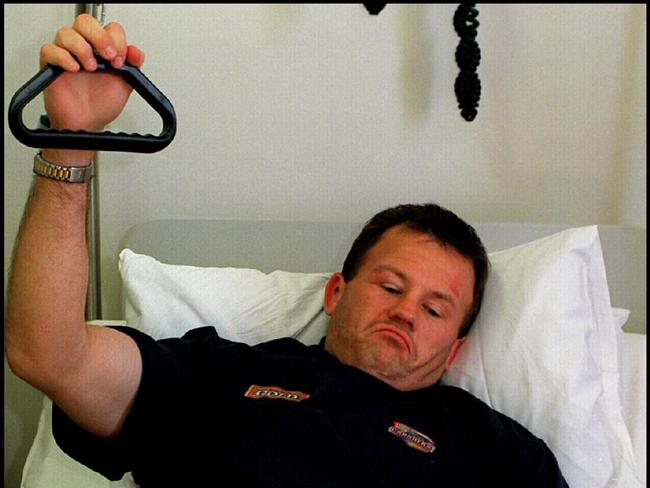

Andrew Johns (1997 ARL grand final): He’s the architect of perhaps the most iconic matchwinning try in rugby league grand final history, but he almost never made it to the game to secure Newcastle’s maiden premiership. Johns had broken his ribs two weeks earlier and he defied doctors orders to play the grand final with a punctured lung. In the end, Johns set up Darren Albert for a try in the dying seconds to win the premiership over Manly.
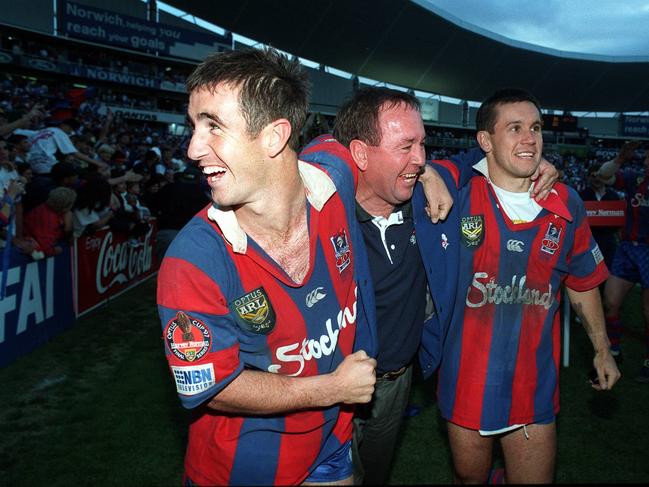
Anthony Stevens (1999 AFL grand final): A fractured heel and torn ankle ligaments in the preliminary final was to rule the North Melbourne midfielder out for 14-16 weeks. Instead, he played eight days later picking up 11 first quarter possessions before more disaster – a torn pec in the second quarter. It was that injury which ruled him out of the game, but the Kangaroos still won.
Shane Webcke (2000 NRL grand final): Doctors told Shane Webcke not to play the 2000 NRL grand final. Broken arms are not the type of injuries front rowers can carry on a rugby league field. But Webcke defied instructions, strapped up his arm, and helped the Broncos defeat the Roosters to win the title.
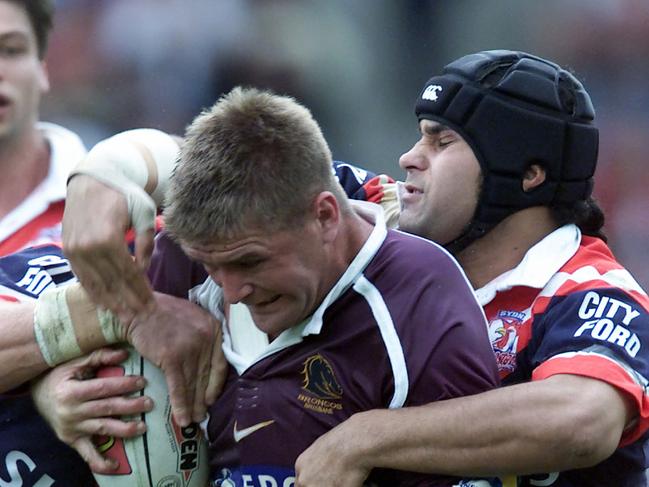
Steve Waugh (2001 Fifth Ashes Test, The Oval): The very definition of captain’s knock, coming back just 19-days after tearing his calf muscle in the third Test, Waugh returned to lead Australia to an Ashes series victory at The Oval. Midway through his brave innings he tore the muscle again, but under the laws of the game wasn’t allowed a runner so then had to slog and hobble his way to a memorable Test century.

Nigel Lappin (2003 AFL grand final): The Lions midfielder sustained broken ribs in the preliminary final and the only way Brisbane coach Leigh Matthews would let him play the grand final – and the club’s quest for a historic three-peat – was if he passed a rigorous fitness test. So rigorous was the test, marking balls above his head while teammates whacked him, it quite possibly gave him a punctured lung. But he passed the test, played the grand final, and won his third premiership medallion.
Grant Hackett (2004 Athens Olympics): When you’re a distance swimmer, lungs are everything. Except when your name is Grant Hackett and you manage to fight on with a partially collapsed lung to win back-to-back Olympic 1500m freestyle gold medals. Hackett had told the media he’d battled bronchial infections in the lead up to Athens, but the reality was far more serious in that his lungs had partially deflated and taken on so much liquid he’d lost 25 per cent function.
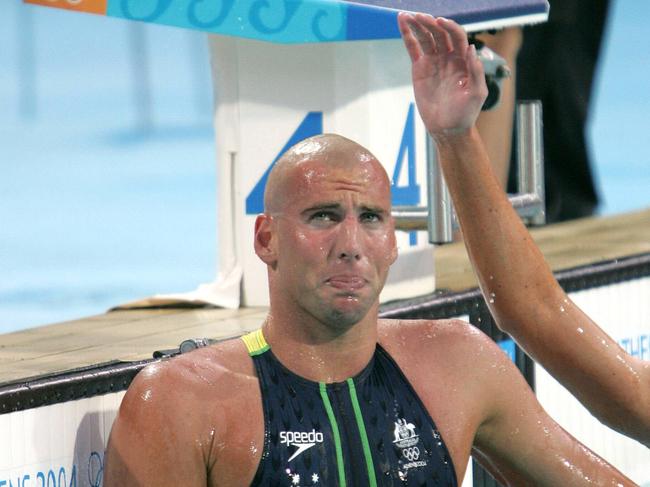
Michael Clarke (2014 Adelaide Test v India): Just two weeks after the shock death of teammate and friend Phil Hughes, captain Michael Clarke desperately wanted to play for his close mate. But Clarke had been battling a serious hamstring injury. Somehow he batted through the pain and made a Test hundred in one of the finest innings of his career. But Clarke then missed the rest of the summer and had a race against time to be fit for the World Cup.

Cyril Rioli (2014 AFL grand final): The Hawthorn speedster had missed a large portion of the season with a serious hamstring injury, but somehow recovered just in time to win a third premiership with the Hawks. Coach Alastair Clarkson revealed it was seeing Rioli dunk a basketball back at the club, after the grand final parade on the Friday, that convinced him he was ready for the big game. Such was the coach’s confidence, he started Rioli in the middle as a statement of intent for what was to come. Rioli was subbed off late in the game, but he’d done his job and helped the Hawks 63-point win over Sydney.
Jeremy McGovern (2018 AFL grand final): West Coast defender had internal bleeding around vital organs just days before the grand final against Collingwood. In constant pain, McGovern played on and came up with the crucial intercept mark that led to the matchwinning Eagles goal.
Cooper Cronk (2018 NRL grand final): The Sydney Roosters halfback had a broken scapula that dominated discussion leading into the grudge match grand final with his former side Melbourne Storm. After days of subterfuge, Cronk lined up. But in a different role. He handed the reins to Luke Keary, touched the ball just 18 times and only had to make nine tackles he was so well hidden in defence. It was a massive gamble to play him, but the Roosters won and his story is part of league history.
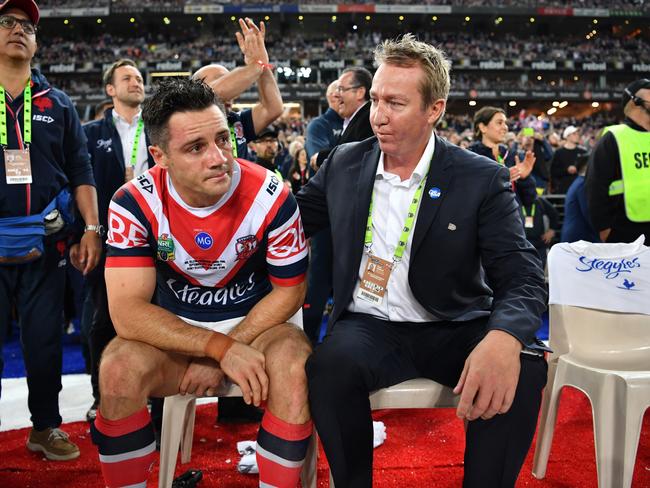
COMEBACKS THAT ALMOST SUCCEEDED
Jana Pittman (2004 Athens Olympics): The 400m hurdler was favourite going into the Athens Olympics, having won her first world title the year before. But her chances were ruined by a knee injury that required surgery 13 days before her Olympic heat. Warming up for the final race before the Games she heard a big “pop”. It was her knee, a torn cartilage. An orthopaedic surgeon told her she was finished. Then a phone call came from a surgeon in the UK saying he thought he could fix it. After the operation Pittman walked out of the hospital and dramatically threw away her crutches in front of waiting media. She made the Olympic final, but finished fifth.
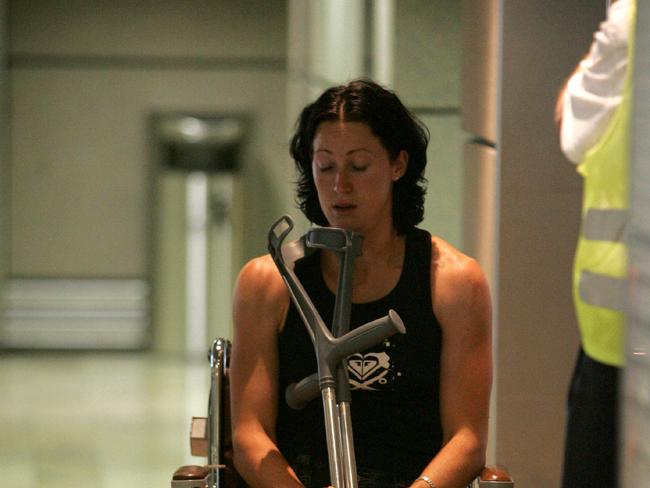

Chris Flannery (2004 NRL grand final): Brace yourselves fellas, this one will make you squirm. The Sydney Roosters forward ruptured his testicle in the 2004 preliminary final, had surgery on the Monday and then simply put padding on the area to play in the grand final against the Bulldogs. Sadly for Flannery, he came off the bench but couldn’t change the game as the Roosters lost. Another kick in the …
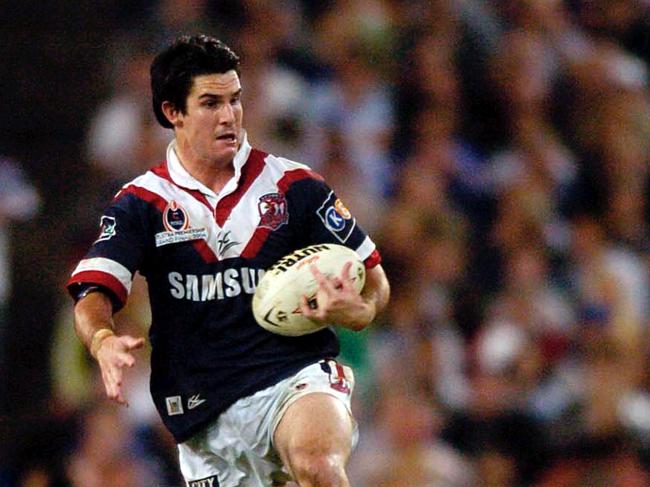
COMEBACKS THAT FAILED
Graeme ‘Changa’ Langlands (1975 NSWRL grand final): Everybody remembers it as the game where the St George captain, coach and gun player wore his white football boots. But with a season full of injuries, Langlands had a painkilling injection before kick off. But rather than merely deadening the pain it made his whole leg numb. It was a disaster and the Dragons lost to Easts.

Shane Watson (2012 Boxing Day Test): Allrounder Watson was under a fitness cloud coming into the Boxing Day Test, with selectors secretly calling Glenn Maxwell in as cover. They’d told Maxwell if Watson fails the fitness Test, he gets a home Test debut. Watson passed, but then broke down with his calf injury after bowling just three overs in the first innings. Maxwell never got that home Test match.
Phil Davis (2019 AFL grand final): The GWS Giants captain hurt his shoulder and calf in the preliminary final, but was still selected to play in the grand final against Richmond. A fitness test before the match at the MCG, in front of the Richmond faithful no less, cleared him to play. But the Giants were thrashed by 89 points by the Tigers and Davis was largely ineffective as his opponent Jack Riewoldt booted five goals.
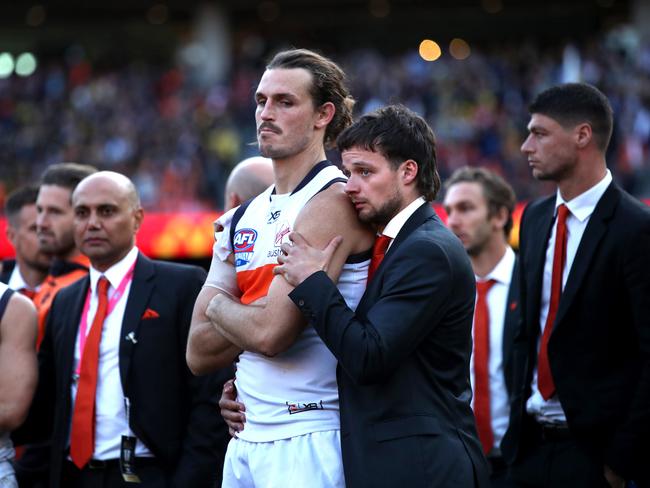
Sam Reid (2022 AFL grand final): Swans coach John Longmire believed Reid had overcome his preliminary final adductor strain when he named the veteran forward for the decider against Geelong. But by the second quarter Reid was struggling and he was subbed out of the grand final just after halftime. “We made a mistake there,” Longmire admitted afterwards.
More Coverage

Originally published as FIFA Women’s World Cup: Sam Kerr and other times Australian sport stars have pushed through pain barrier


